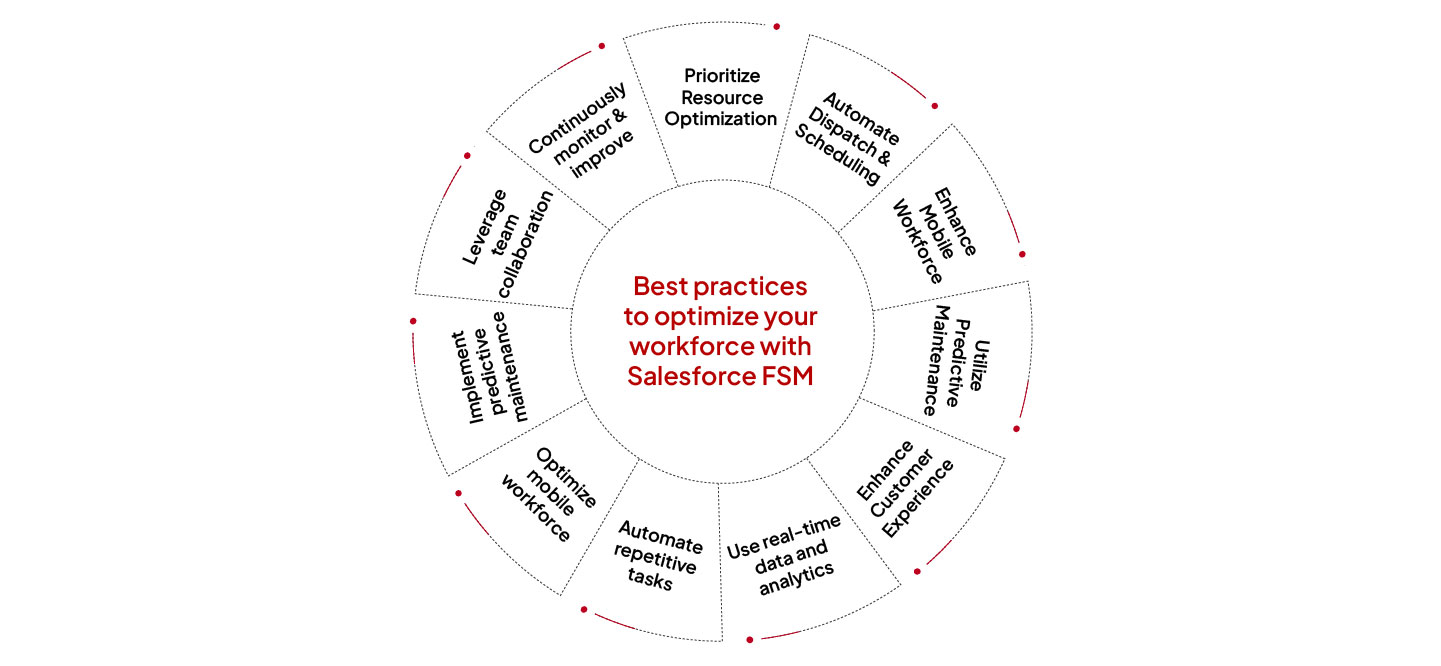The world of work is changing rapidly, and one of the biggest changes is the rise of the mobile workforce. More and more employees are working outside of traditional office settings, whether they’re out in the field, working remotely, or traveling for business. This shift presents both opportunities and challenges for companies, as they seek to manage their mobile workforce and ensure that it is as efficient and effective as possible.
One solution to this challenge is Salesforce Field Service Management. This powerful cloud based solution is designed to help companies optimize their mobile workforce, improving efficiency, reducing costs, and providing a better customer experience.
So, how does Salesforce Field Service Management work? At its core, the platform is designed to help companies schedule and dispatch their mobile workforce more effectively. This includes everything from assigning tasks to specific workers, to tracking their location and progress in real-time. By providing real-time visibility into their mobile workforce, companies can make better decisions about how to allocate resources, optimize scheduling, and respond quickly to changes in demand.
Optimizing your Salesforce FSM at all times is a must for companies to optimize their mobile workforce efficiency and utilization. Let’s look at some of the best practices companies can follow to achieve that.

1. Prioritize Resource Optimization
Salesforce FSM allows businesses to optimize their field service resources by balancing workload, considering skills and availability, and providing real-time information on the status of service requests. By doing so, businesses can ensure that the right resources are deployed to the right job at the right time, reducing downtime and maximizing efficiency.
2. Automate Dispatch and Scheduling
Automating dispatch and scheduling is a key aspect of maximizing efficiency in field service operations. Salesforce FSM provides advanced scheduling and dispatch capabilities, allowing businesses to quickly and easily schedule appointments, assign resources, and manage field service requests.
3. Enhance Mobile Workforce
Salesforce FSM provides a robust mobile app for field technicians, allowing them to access critical information, manage tasks, and update status on the go. This enhances the mobility and productivity of the field service workforce, improving efficiency and reducing downtime.
4. Utilize Predictive Maintenance
Salesforce FSM provides advanced predictive maintenance capabilities, allowing businesses to proactively address potential issues before they become problems. By leveraging this feature, businesses can reduce downtime and improve the efficiency of their field service operations.
5. Enhance Customer Experience
Salesforce FSM provides businesses with the ability to deliver outstanding customer service by providing real-time information and updates on service requests. By doing so, businesses can enhance the customer experience, build loyalty, and increase customer satisfaction.
6. Use real-time data and analytics
Salesforce Field Service Management provides real-time data and analytics on field service operations, which can help organizations make data-driven decisions and optimize their operations. Use this information to identify areas for improvement and implement data-driven changes.
7. Automate repetitive tasks
Salesforce Field Service Management provides automation capabilities that can help organizations streamline their operations and reduce manual errors. Automate tasks such as scheduling, dispatch, and resource allocation to improve efficiency.
8. Optimize mobile workforce
Salesforce Field Service Management is designed for mobile use, which means that field service technicians can access real-time data and updates on the go. Optimize the mobile workforce by providing the necessary tools and resources to complete tasks efficiently and effectively.
9. Implement predictive maintenance
Predictive maintenance is a proactive approach to maintenance that uses data and analytics to predict when equipment is likely to fail. Salesforce Field Service Management provides the tools to implement predictive maintenance, which can help organizations maximize equipment uptime and reduce maintenance costs.
10. Leverage team collaboration
Salesforce Field Service Management provides team collaboration features that can help organizations improve communication and coordination among field service technicians and other stakeholders. Use these features to ensure that everyone is on the same page and working towards the same goals.
11. Continuously monitor and improve
Salesforce Field Service Management provides real-time data and analytics on field service operations, which can help organizations monitor performance and identify areas for improvement. Continuously monitor and analyse performance data and implement changes to optimize operations.
Overall, Salesforce Field Service Management is a powerful tool for businesses to manage their field service operations and improve efficiency. By improving scheduling and dispatch, better resource allocation, increased productivity and efficiency, and enhanced customer experience, Salesforce FSM can help companies achieve their goals and deliver high-quality service to their customers. Whether you’re just starting out with Salesforce FSM or you’re looking to optimize your existing implementation, these tips will help you achieve your goals and improve the overall efficiency of your field service operations.




